#Umberto II
Explore tagged Tumblr posts
Text


AK Famiglia Reale a Racconigi, Königsfamile von Italien zu Pferd
Alte Ansichtskarten.
#royalty#Vittorio Emanuele III#Jelena Petrović Njegoš#Principessa Iolanda di Savoia#Principessa Mafalda di Savoia#Umberto II#side saddle#ponies#donkey#horse#postcard#carte postale#ansichtskarte
29 notes
·
View notes
Text

King Umberto II of Italy.
3 notes
·
View notes
Text
In 1946 there was a referendum in Italy to decide if to continue the monarchy, championed by king Umberto Il even during his regency from 1944 but stained by his father letting Mussolini take over, or create a republic, position supported by many of those who fought Fascism (there were also monarchists that fought Fascism, especially after the September 8 Armistice got most of the country occupied by the Germans and ruled by Mussolini with a puppet regime, but they were always outnumbered). The official result was 51% for the republic, though there were many hints and allegations it was rigged, enough for Umberto Il's advisors to suggest forcing the issue militarily. His answer, before freeing the troops from their oaths to the king?
"The republic can be sustained with 51 percent, but not the monarchy. [...] Monarchy is never a party. It's a mystical institution, irrational, capable of creating immense will of sacrifice in men, subjects, and princes... It can't be forced to defend daily from suspicions and accuses. It must be a beloved symbol, or it's nothing"
Let the Americans and MAGA beware: what they're trying to make is a monarchy in everything but name, but too many know the truth. And unless everyone or almost everyone buys it, MAGA is nothing.
2 notes
·
View notes
Text
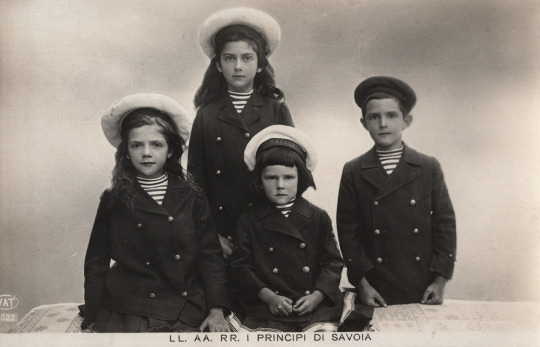
OTMAA Contemporaries: The Italian Royal Children.
From left: Princess Mafalda (1902), Princess Yolanda (1901), Princess Giovanna (1907), and Prince Umberto (1904). They would eventually joined by Princess Maria Francesca (1914).
#otmaa contemporaries#yolanda of savoy#mafalda of savoy#giovanna of savoy#maria francesca of savoy#umberto ii#my collection#italian royal family
15 notes
·
View notes
Text

Postcard issued on the occasion of the engagement between Princes Umberto of Italy and Maria José of Belgium.
20 notes
·
View notes
Text

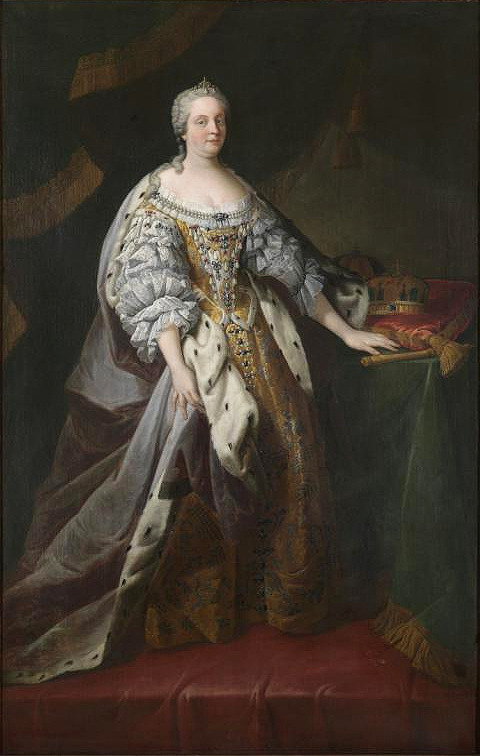
It's time for the return of the “Living People Related to Maria Theresa” game, started by @vivelareine
Here we have a descendant of hers through her daughter, Maria Carolina, the Queen of Naples and Sicily. (Though you can also trace her line of descent to other children of Maria Theresa, due to the amount of intermarriage among the Habsburg Dynasty). Her name is Vittoria of Savoy, and she's a 20 year old fashion model, who is studying art history and political science.
Vittoria of Savoy (Born December 29th, 2003) –> Emanuele Filiberto of Savoy –> Vittorio Emanuele of Savoy –> Umberto II –> Victor Emmanuel III –> Umberto I –> Victor Emmanuel II –> Maria Theresa of Austria –> Luisa of Naples and Sicily –> Maria Carolina of Austria –> Maria Theresa
#vittoria of savoy#maria theresa#umberto i#maria carolina of austria#umberto ii#victor emmanuel iii#Victor Emmanuel II#maria theresa of austria#luisa of naples and sicily#long live the queue
7 notes
·
View notes
Text
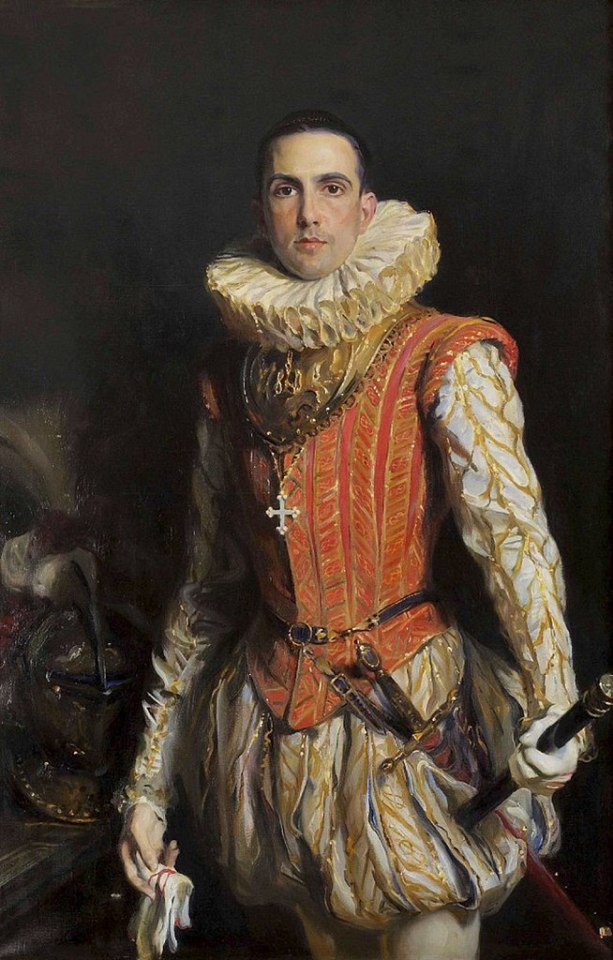
Philip de László (1869 – 1937)
Prince Umberto of Savoy, Prince of Piedmont (King Umberto II of Italy)
659 notes
·
View notes
Text
Hétvégén volt szerencsém.





4 notes
·
View notes
Text
Winding Up the Week #402
An end of week recap “There are only two or three human stories, and they go on repeating themselves as fiercely as if they had never happened before.” – Willa Cather (born 7th December 1873) Following a literary lull of sorts after ‘nonstop November’, it seems increasingly likely January 2025 will be a relatively busy month for those who like to participate in several reading events at once – in…
#EchoesofEcoII#EdnaObrien2025#2025 American Masterpieces Chapter-a-Day Read-Along#A Year With Edna O’Brien#Alex Haley#C.E. McGill#Cathy Converse#Christmas Books#Donal Ryan#Echoes of Eco II#Edna O’Brien#Herman Melville#Larry McMurtry#Melissa Harrison#Pierre Lemaitre#Tessa Hadley#Umberto Eco#Willa Cather#Winter Reading
0 notes
Text
[citation needed]

0 notes
Text

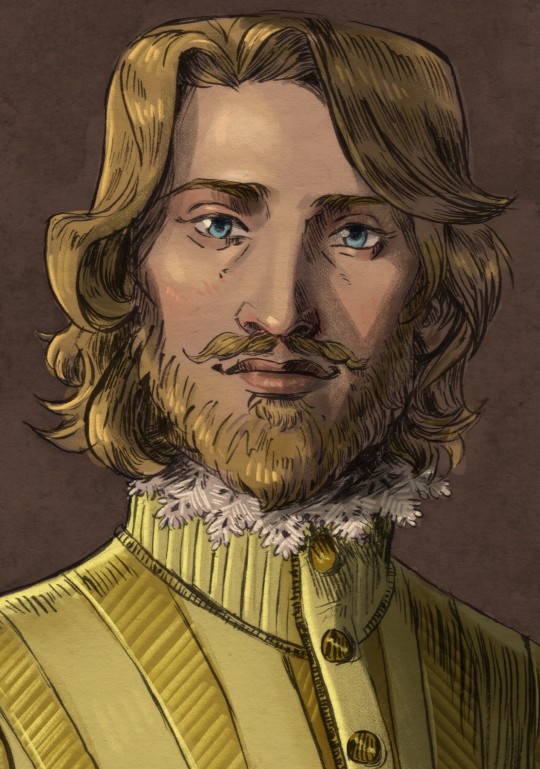
[ID in alt text]
I picked Tary for my pfp on Beacon and I really felt like drawing him <3 I used the painting of King Umberto II of Italy (under the cut) as reference - wanted it to look like a stately kinda portrait!
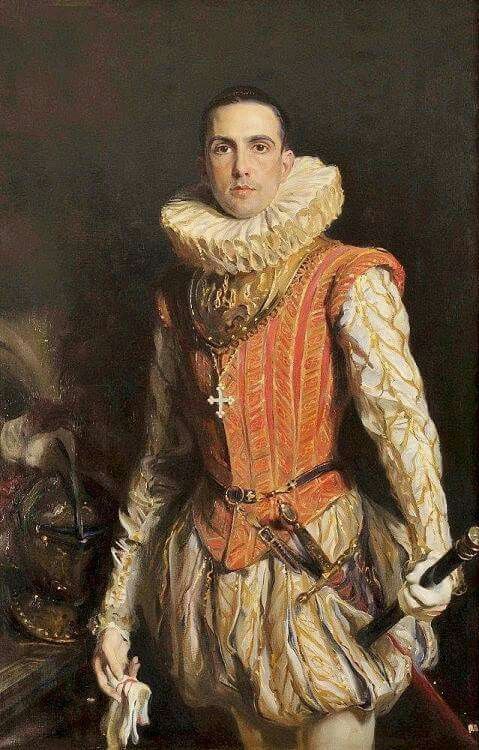
[portrait of King Umberto II of Italy by Philip de László - ID in alt text]
595 notes
·
View notes
Text

OTMAA Contemporaries: The Italian Royal Family.
From left: Yolanda (1901) with Maria Francesca (1914), Umberto (1904), Mafalda (1902) and Giovanna (1907). Like OTMAA, there were four sisters and only one brother; but in this case, the brother was the middle child. This generation of Italian royalty did have some Romanov connections, as their mother, Queen Elena, was born a princess of Montenegro, and her sisters Militza and Anastasia had married into the Romanov family. Therefor the young Italian royals were first cousins of Roman Petrovich and his sisters Marina and Nadejda. Another aunt, Zorka, had married into the Serbian royal family, and the Italians also counted King Alexander of Serbia/Yugoslavia and his sister, Elena Petrovna, who married Prince Ioann Konstantinovich, among their cousins.
#otmaa contemporaries#italian royal family#yolanda of savoy#mafalda of savoy#umberto ii#giovanna of savoy#maria francesca of savoy#press photo#my collection
21 notes
·
View notes
Text


Helga and Hilde with their mother and father during the visit of Prince Umberto II in 1936.
35 notes
·
View notes
Text

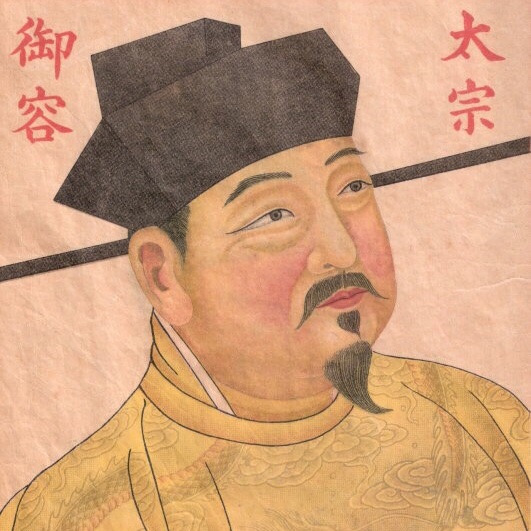








Royal Birthdays for today, November 20th:
Maximinus II, Emperor of Rome, 270
Taizong of Song, Emperor of China, 939
Fasilides, Emperor of Ethiopia, 1603
Tipu Sultan, Ruler of Mysore, 1750
Margherita of Savoy, Queen of Italy, 1851
Maria Letizia Bonaparte, Duchess of Aosta, 1866
Alexandra of Sayn-Wittgenstein-Berleburg, Countess of Pfeil, 1970
Sofia, Princess of Bulgaria, 1999
Umberto, Prince of Bulgaria, 1999
Theodora, Princess of Liechtenstein, 2004
#maximinius ii#taizong of song#tipu sultan#margherita of savoy#Alexandra of Sayn-Wittgenstein-Berleburg#Fasilides#Maria Letizia Bonaparte#sofia of bulgaria#prince umberto#theodora of liechtenstein#long live the queue#royal birthdays
12 notes
·
View notes
Text
Dieci anni di monarchia assoluta. (...) Poi a gennaio 2015, King George aveva lasciato il trono perché proprio non ce la faceva più. (...) Altrimenti, potete starne certi, sarebbe rimasto ancora là (...) a comandare le operazioni, a fare e disfare governi, a organizzare ribaltoni (...). E anche dopo, fuori dalla reggia (...) per un bel po' si è fatto sentire: (a)ltro che pensionato. (...) quella di Giorgio Napolitano non è stata una presidenza leggera, neutra, notarile, ma sempre al limite e talvolta debordante. Come banale non è stata la sua intera vita pubblica. (...) Giorgio Napolitano era nato a Napoli (...). Figlio di un avvocato (...), studi classici, (...). Elegante, sobrio, parlava un inglese perfetto: nel Pci per le sue posizioni lo chiamavano l'amerikano. Oppure re Umberto (...). (A)ll'università si era iscritto al Gruppo Universitari Fascisti (...), nel 194(5) entrò nel Pci. Deputato dal 1953, (...), diventò presto uno degli esponenti di maggior peso dell'ala riformista, i cosiddetti miglioristi (...). (A)lla morte di Enrico Berlinguer (...) gli fu preferito (come segretario del Partito) il più (...) ortodosso Alessandro Natta. (...) Nel 1992 venne eletto presidente della Camera. (...) Nel 1996 Romano Prodi lo scelse come ministro degli Interni (...). Dopo la caduta del governo del Professore, (...) Ciampi lo nominò senatore a vita. Il dieci maggio 2006, (...) superando Massimo D'Alema, venne eletto undicesimo presidente della Repubblica italiana. (...) Due anni dopo Silvio Berlusconi rivinse le elezioni e per Napolitano si aprì un difficile periodo di coabitazione. Seguendo le orme di Ciampi, re Giorgio cercava di limitare il Cav con la moral suasion e successi alterni. (...) (Ne)l 2011 Berlusconi, indebolito da alcune defenzioni nella maggioranza, malvisto da Francia e Germania e (messo) sotto pressione con lo spread (...), fu fortemente convinto a passare la mano a Mario Monti, che nel frattempo King George aveva prontamente nominato senatore a vita. Regista dell'operazione, voluta da Bruxelles (Parigi e Berlino) e ritenuta un golpe (...), Napolitano. Monti e i suoi tecnici governarono un annetto (...). Nel 2013 nuove elezioni con la vittoria dimezzata del Pd (e il trionfo del m5s) (...). Il sistema si bloccò. (...) Senza governo, senza un accordo, senza un nome per la presidenza: (l')ingorgo istituzionale (...). Il 20 aprile 2013 nacque il Giorgio II. Tre giorni più tardi, dopo un discorso di fuoco di Napolitano alle Camere, Enrico Letta si insediò a Palazzo Chigi a capo di un esecutivo di unità nazionale (...). Letta tirò avanti per un po', finché il Quirinale non lo sostituì con l'astro nascente Matteo Renzi. Per Napolitano un paio d'anni (di benevolo controllo remoto), fino alle dimissioni nel 2015. Una lunga monarchia condizionata dalla crisi economica e dal vuoto di potere della politica che il Re della Repubblica ha riempito, segnata pure da ruvidi scontri tra Colle e magistratura, fatta di tanti rimproveri ai giudici «protagonisti», culminata con l'intercettazione «casuale» di un colloquio tra il presidente e Nicola Mancino e il conflitto di attribuzione con la procura di Palermo.(...)
Ritratto accurato di un AVVERSARIO ben più lucido e pericoloso di tutto il resto della masnada idealista autoinculante, cui rivolgere RIP e onesto omaggio - ha combattuto efficacemente; di M.Scafi su https://www.ilgiornale.it/news/politica/record-e-giravolte-politico-che-ha-segnato-nostra-repubblica-2214770.html
L'iscritto al Guf che diventa comunista, da Kruschev all'Amerika dei Dems., l'Internazionalista che diventa Gauleiter di Franza e Cermania, la difesa del proletariato che si fa golpe di Palazzo : medieval machiavellico (è un complimento), ma quale vita ricca di contraddizioni, fu sempre perfettamente lucido e fedele alla linea nella sua vita.
79 notes
·
View notes
Text
I realize this is me being persnickety, but:
There seems to be a convention in English-language history to translate the names of most European monarchs before about the mid-19th century into English from their native language. So for instance, the Holy Roman Emperor Charles V instead of the Holy Roman Emperor Karl V.
To a certain extent this makes sense, particularly in that case since he was also King Charles/Carlos I of Spain and you sort of need to settle on one name to call him. There's also the fact that his first and most natural language was French, and his coins would have called him Carolus.
Then in about the mid-19th century, you start seeing more and more monarch's names translated by convention (perhaps because of the rise of nationalism?). So for example, Wilhelm II is far more common than William II in English-language historiography, and Franz Josef is much more common for the Emperor of Austria than Francis Joseph. But - and here's where I get frustrated - his contemporary the Tsar of Russia is almost always called Nicholas II in English-language history, not Nikolai II! The contemporary King of Italy is usually called Victor Emmanuel III instead of Vittorio Emanuele, while his immediate predecessor and successor as King of Italy always their names translated as Umberto I/II instead of the English Humbert I/II. So the standard literally changes for the same country from one ruler to the next for no apparent reason other than "it's convention."
As for non-monarchs, their names are almost always given in their native language in modern histories. It's just monarchs that have this weird and very inconsistent double standard in how English-language historians write their names. I realize this isn't that serious an issue and again I'm just being persnickety, but I wish historians would pick a standard and stick to it
5 notes
·
View notes